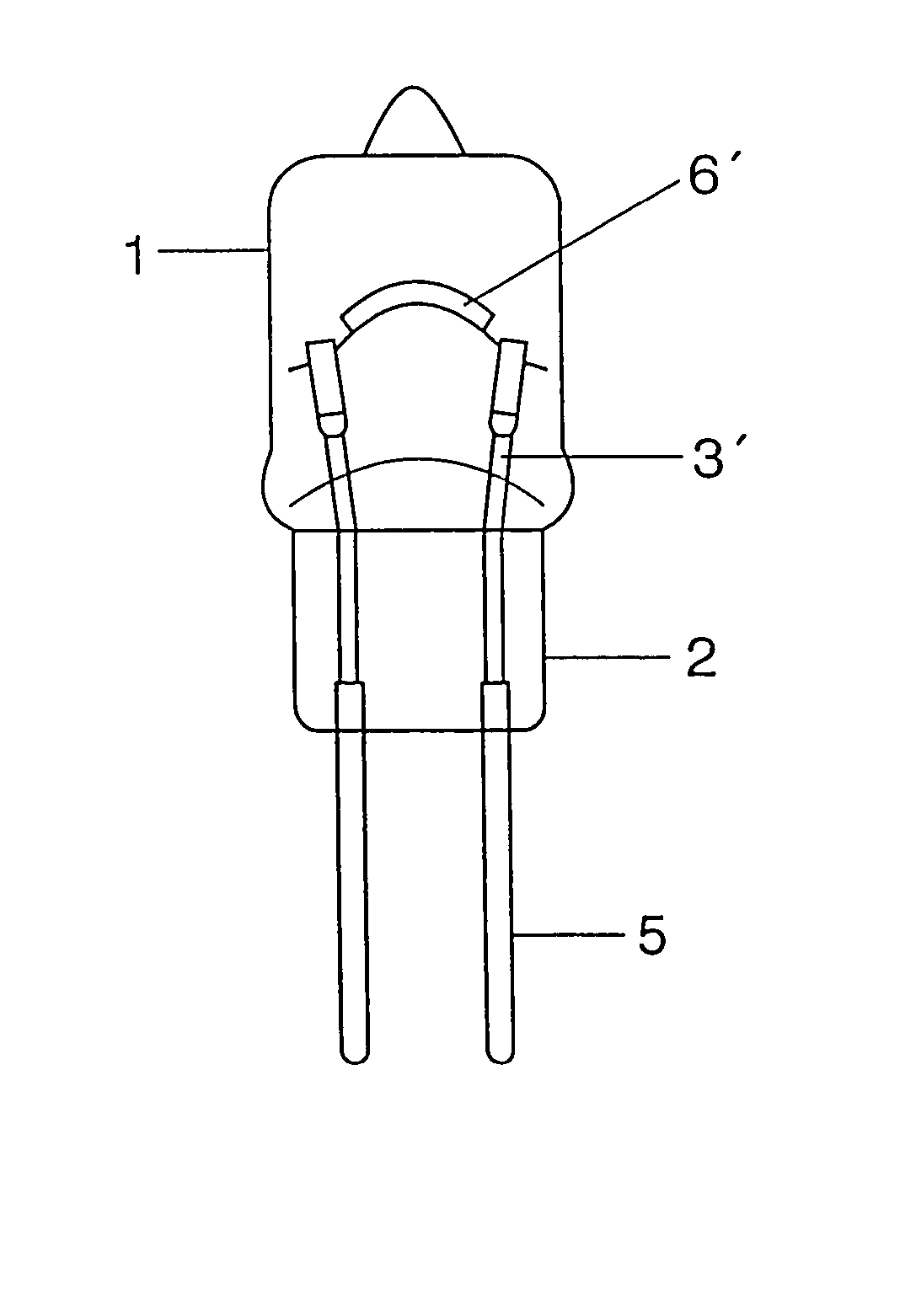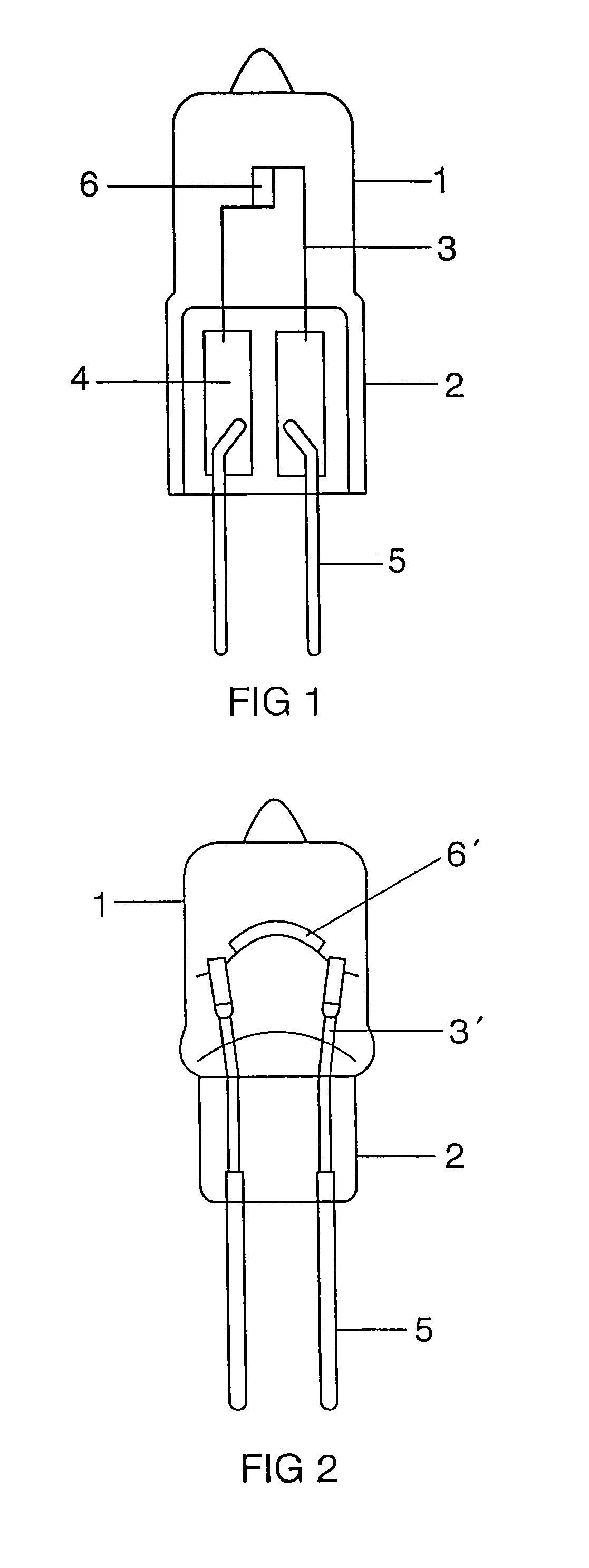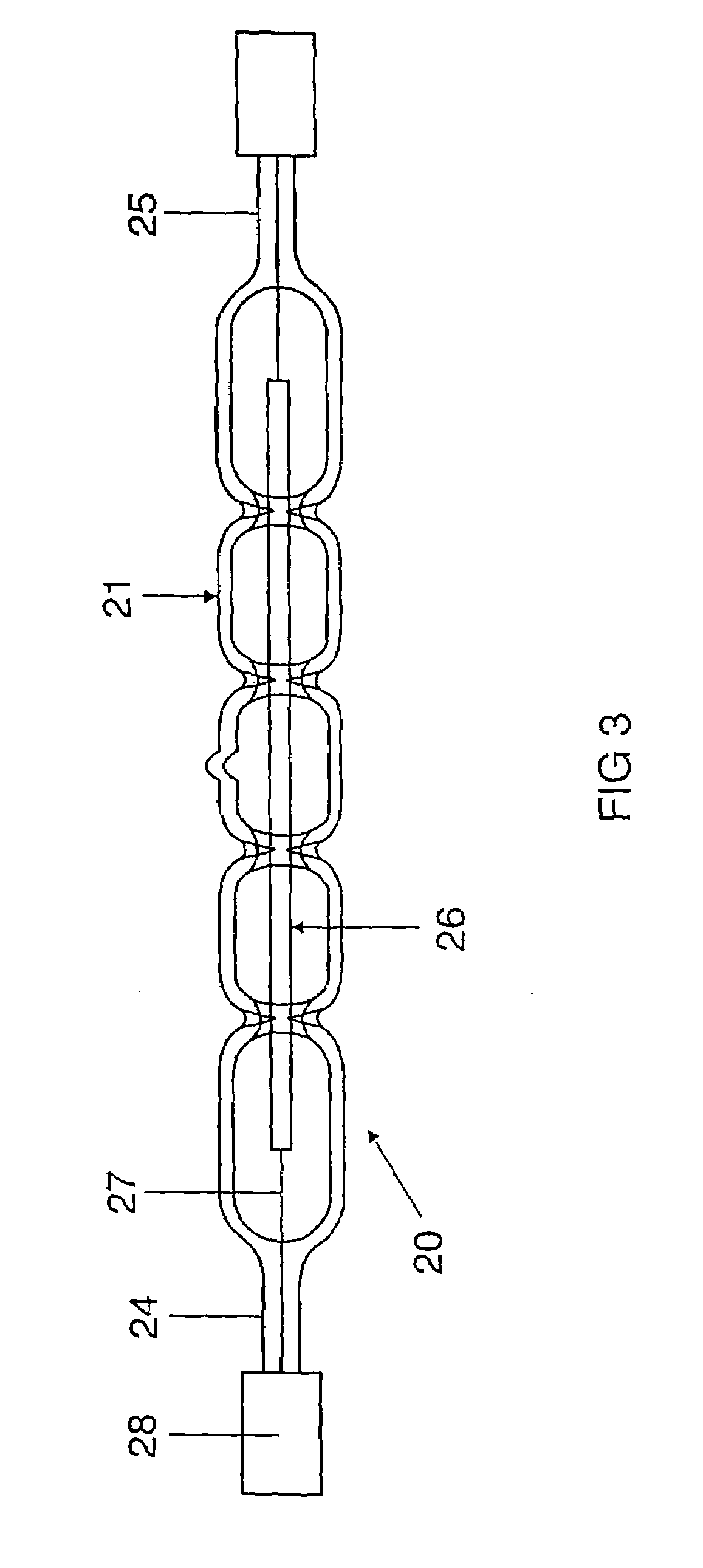Incandescent lamp with a carbon cycle and a halogen cycle
a technology of halogen cycle and incandescent lamps, which is applied in the direction of climate sustainability, electrical appliances, sustainable buildings, etc., can solve the problem of no longer suitable for using conventional carbon-halogen cycle processes, and achieve the effect of higher luminous density
- Summary
- Abstract
- Description
- Claims
- Application Information
AI Technical Summary
Benefits of technology
Problems solved by technology
Method used
Image
Examples
Embodiment Construction
[0060]FIG. 1 shows an incandescent lamp which is pinched on one side and has a bulb made from quartz glass 1, a pinch 2 and supply conductors 3 which connect foils 4 in the pinch 2 to a luminous body 6. The luminous body is a coiled wire made from TaC. The current feeds 5 are fitted to the outside of the foils. The internal diameter of the bulb is 5 mm.
[0061]FIG. 2 shows an incandescent lamp which is pinched on one side and has a bulb made from hard glass 1, a pinch 2 and supply conductors 3′ which are connected to a luminous body 6′ in the pinch 2. The luminous body 6′ is a coiled wire with a core of rhenium and a layer TaC at the surface. This luminous body is more readily deformable than a luminous body which consists purely of carbide. In this case, generally first of all the rhenium wire is wound, then a TaC layer is applied. The current feeds 5 are fitted directly to the supply conductors 3′ on the outside, specifically in the region of the pinch. The internal diameter of the ...
PUM
| Property | Measurement | Unit |
|---|---|---|
| pressure | aaaaa | aaaaa |
| temperature | aaaaa | aaaaa |
| temperatures | aaaaa | aaaaa |
Abstract
Description
Claims
Application Information
 Login to View More
Login to View More - R&D
- Intellectual Property
- Life Sciences
- Materials
- Tech Scout
- Unparalleled Data Quality
- Higher Quality Content
- 60% Fewer Hallucinations
Browse by: Latest US Patents, China's latest patents, Technical Efficacy Thesaurus, Application Domain, Technology Topic, Popular Technical Reports.
© 2025 PatSnap. All rights reserved.Legal|Privacy policy|Modern Slavery Act Transparency Statement|Sitemap|About US| Contact US: help@patsnap.com



